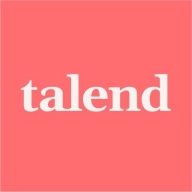

SSIS and Talend Open Studio compete in the ETL solutions category. Based on the data, SSIS seems to have an advantage due to its seamless integration with Microsoft products, whereas Talend Open Studio shines with its extensive connectivity options but faces challenges with its user interface.
Features: SSIS offers a comprehensive suite of ETL solutions, supports parallel data processing, and provides robust scripting capabilities. Its integration with Microsoft products makes it highly compatible within that ecosystem. Talend Open Studio is valued for its powerful data integration capabilities, extensive connectivity, and wide range of pre-built connectors that enhance its versatility and ease of use.
Room for Improvement: SSIS struggles with scalability, real-time processing capabilities, and connectivity with non-Microsoft sources. It also faces issues with high data volumes and error logging. Talend Open Studio is critiqued for resource consumption, a less intuitive interface, and the need for better training resources. Its open-source version lacks features offered in the enterprise edition, impacting its appeal to larger organizations.
Ease of Deployment and Customer Service: SSIS is primarily deployed on-premises, benefiting from integration within the Microsoft ecosystem, but users report mixed experiences with Microsoft's technical support. Talend Open Studio supports flexible deployment across environments and is generally well-regarded for technical support, though inefficiencies and a need for improved customer service are noted.
Pricing and ROI: SSIS is often bundled with Microsoft SQL Server, providing cost-effectiveness for enterprises using Microsoft technologies. Talend Open Studio offers a free open-source version, particularly attractive to small teams, but its enterprise version may incur significant costs. Despite this, Talend is seen as a valuable investment for its comprehensive features and flexibility, though users caution about total cost of ownership, including licensing.
The tool has made us tremendously more efficient and saved us a significant amount of money.
Using SSIS has proven cost-effective as there are no additional fees outside the SQL Server license, and it significantly enhances data management efficiency.
The first line of support needs to be more knowledgeable.
It processes large volumes of data quickly.
Within the South African context, if you are getting your enterprise agreement from First Technology, they don't provide support.
SSIS has a difficult learning curve when dealing with complex transformations.
The logging capabilities could be improved, particularly for error logging.
If we could have round-the-clock support, we would be able to resolve many issues which we encounter during the development part.
Utilizing SSIS involves no extra charges beyond the SQL Server license.
It was included in our licensing for SQL server, and our licensing for SQL server was extremely cheap, making it a very good price point for us.
It is a very robust tool that can work with many data sources, and its main strength is that it is extremely easy to use.
The challenge lies in Microsoft withdrawing a lot of the qualifications and watering down its emphasis, leading to a perception that this is supposed to be an elite product.
One of the best aspects of SSIS is that it is built into Microsoft SQL Server, so there are no additional costs involved.
It also comes with a console which helps us to monitor the jobs we have built in, making that monitoring part easy.
| Product | Market Share (%) |
|---|---|
| SSIS | 5.7% |
| Talend Open Studio | 3.2% |
| Other | 91.1% |


| Company Size | Count |
|---|---|
| Small Business | 26 |
| Midsize Enterprise | 19 |
| Large Enterprise | 57 |
| Company Size | Count |
|---|---|
| Small Business | 22 |
| Midsize Enterprise | 13 |
| Large Enterprise | 18 |
SSIS is a versatile tool for data integration tasks like ETL processes, data migration, and real-time data processing. Users appreciate its ease of use, data transformation tools, scheduling capabilities, and extensive connectivity options. It enhances productivity and efficiency within organizations by streamlining data-related processes and improving data quality and consistency.
Talend Open Studio is a free, open source ETL tool for data integration and Big Data. The solution enables you to extract diverse datasets and normalize and transform them into a consistent format which can be loaded into a number of third-party databases and applications.
Talend Open Studio Features
Talend Open Studio has many valuable key features. Some of the most useful ones include:
Talend Open Studio Benefits
There are several benefits to implementing Talend Open Studio. Some of the biggest advantages the solution offers include:
Reviews from Real Users
Below are some reviews and helpful feedback written by PeerSpot users currently using the Talend Open Studio solution.
Elio B., Data Integration Specialist/CTO at Asset messages, says, "The solution has a good balance between automated items and the ability for a developer to integrate and extend what he needs. Other competing tools do not offer the same grade of flexibility when you need to go beyond what is provided by the tool. Talend, on the other hand, allows you to expand very easily."
A Practice Head, Analytics at a tech services company mentions, “The data integration aspect of the solution is excellent. The product's data preparation features are very good. There's very useful data stewardship within the product. From a technical standpoint, the solution itself is pretty good. There are very good pre-built connectors in Talend, which is good for many clients or businesses, as, in most cases, companies are dealing with multiple data sources from multiple technologies. That is where a tool like Talend is extremely helpful.”
Prerna T., Senior System Executive at a tech services company, comments, “The best thing I have found with Talend Open Studio is their major support for the lookups. With Salesforce, when we want to relate our child objects to their parent object, we need to create them via IDs. Then the upsert operation, which will allow you to relate a child object to the event, will have an external ID. That is the best thing which keeps it very sorted. I like that.”
An Implementation Specialist, Individual Contributor at a computer software company, states, “I can connect with different databases such as Oracle Database or SQL Server. It allows you to extract the data from one database to another. I can structure the data by filtering and mapping the fields.” He also adds, “It is very user-friendly. You need to know the basics of SQL development or SQL queries, and you can use this tool.”
PeerSpot user Badrakh V., Information System Architect at Astvision, explains, "The most valuable features are the ETL tools."
We monitor all Data Integration reviews to prevent fraudulent reviews and keep review quality high. We do not post reviews by company employees or direct competitors. We validate each review for authenticity via cross-reference with LinkedIn, and personal follow-up with the reviewer when necessary.